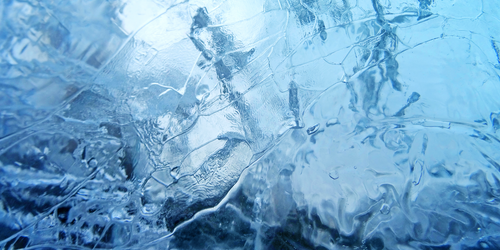The Two Structures of Hot Dense Ice
If water exists on an icy giant planet or an exoplanet, it’s most likely in a phase that doesn’t naturally occur on Earth. At the high temperatures and pressures inside these planetary bodies, water molecules should break apart. Their oxygen ions should then crystallize into a lattice while their hydrogen ions float freely, creating an ion-conducting substance called superionic ice. Theorists have predicted this ice’s structures, but there is disagreement about when superionic phases are stable. Now, Gunnar Weck of the University of Paris-Saclay and his colleagues have experimentally confirmed two superionic-ice lattice structures and the conditions under which each remains stable [1]. The study resolves a long-standing puzzle and provides insight into the materials and conditions that may exist in icy planetary interiors.
Recent experiments indicate that superionic ice has different crystal structures under different pressures. But ambiguities exist in the exact arrangement of atoms in these crystals. To provide clarity on this issue, Weck and his colleagues examined hot dense water ice at pressures between 25 and 180 GPa and at temperatures between 500 and 2500 K. The team compressed their water ice using a diamond anvil cell and heated it with a laser using boron-doped diamond heaters. They used synchrotron x-ray diffraction to determine each sample’s atomic arrangement during this process.
In their experiments, Weck and his colleagues observed two superionic-ice structures. They found that the ice started transitioning between the two structures at a pressure of 57 GPa and a temperature of 1500 K and completed the change at 166 GPa and 2500 K. The team presented the phase diagram to illustrate the stability conditions for each structure.
–Rachel Berkowitz
Rachel Berkowitz is a Corresponding Editor for Physics Magazine based in Vancouver, Canada.
References
- G. Weck et al., “Evidence and stability field of fcc superionic water ice using static compression,” Phys. Rev. Lett. 128, 165701 (2022).




